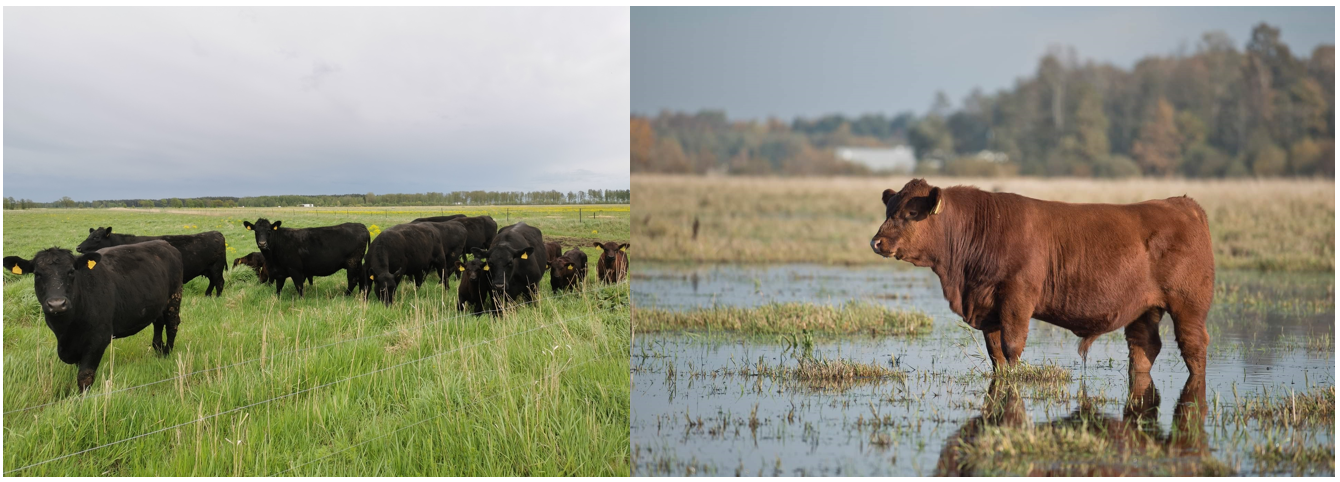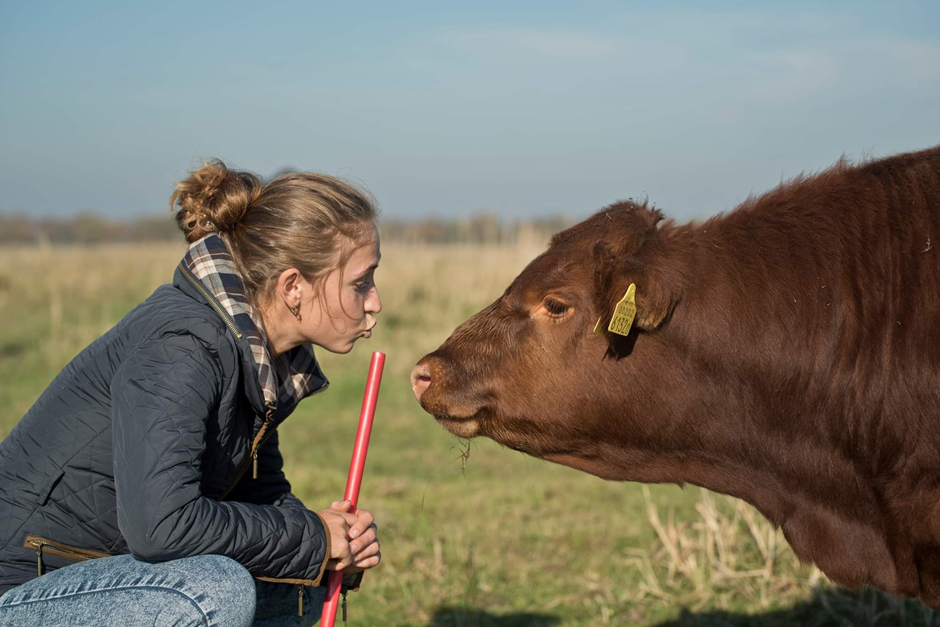Introduction
The aim of the study was to perform a life cycle assessment (LCA) of Estonian sheep and beef production to gain increased knowledge on the environmental impacts of meat from different local production systems. The functional unit of the study was 1 kg of meat (carcass weight) from cradle to farm gate.
3 organic and 3 conventional farms were surveyed (beef and sheep). The project was carried out by the Estonian Nature Foundation, which is the local branch of WWF. The result of the project is, in addition to the analysis, a website with a meat guide and consumer education through video clips on how to choose their food in a more environmentally friendly way. Prefer meat from farms with a small footprint and make informed choices when consuming meat and fish.

Photos by Maria Liisa Luur
Description of the innovation
The assessment is based on real farm data collected from organic and conventional farms. Farm data included all inputs, outputs and processes linked to meat production at farm: purchased feeds, used energy, feed production, manure management, production amounts etc. Data was collected about 2 operational years for sheep farms (2018 – 2019) and 3 operational years for beef farms (2017 – 2019). All beef farms were specialised on beef breed production, no milk production farms were included.
Main outcomes :
- Organic and conventional beef meat resulted in similar average carbon footprint, 37 and 38 kg CO2eq per 1 kg of meat CW respectively.
- Some examples of other beef studies (no carbon sequestration included): 32-34 kg CO2eq/kg beef CW in Finland (Hietala et al. 2021), 45 kg CO2eq/kg beef CW in Brazil (extensive production, Dick et al. 2014), 32 kg CO2eq/kf beef CW in UK (live weight gain is calculated to CW using factor 0.55, McAuliffe et al. 2018).
- Conventional sheep meat shows lower impact than organic (24 vs 46 kg CO2eq on average) but this is based only two farms analysed and is affected by significantly lower result of one farm.
- Some examples of other sheep studies (no carbon sequestration included): 39 to 57 kg CO2eq/kg sheep CW in Spain (Ripoll-Bosch et al. 2011), 49 kg CO2eq/kg sheep CW as an average value for Italy, Portugal, Slovenia, Spain, Germany and Turkey (Ecolamb).
- Previous studies have mostly used lower GWP for methane (25), compared to this study which is based on current GWP for methane (28; IPCC 2013).
- Methane from enteric fermentation is the main GWP impact hotspot, contributing on average 55-64% of the total emissions for sheep meat and 60-69% of the total emissions for beef meat.
- Purchased feeds give higher contribution in conventional farms compared to organic farms.
- Pesticide use was 0.0003 – 0.0033 kg active ingredient/kg of conventional beef and 0.0015 – 0.0040 kg active ingredient/kg of conventional sheep meat. Farms in this study were not using pesticides in their fields and grasslands.
- Some studied farms have lower production output (CW meat) even compared to others with similar main herd size. This results in higher absolute impact value (as it is quantified per output unit) together with all the contributing process impacts (i.e. showing higher enteric fermentation as well).
- Including soil carbon sequestration to the assessment, both organic and conventional animal farms have a potential to reduce their carbon footprint to negative value, i.e. to sequester more carbon than emit per 1 kg of meat. The sequestration varies significantly between farms, caused by the differences in land use - more hectares of permanent or natural grasslands results in higher carbon sequestration potential.
Impact on farm performance
The farmer was reassured that his production was moving in the right direction and that he didn't need to make any major changes. To be sustainable in this region of Estonia, the farm needs to combine practices (grazing in seminatural areas and making silage and hay from other farmers lands) and work with other beef and grain farmers. There are many Natura semi-natural grazing areas in the area which provide forage during the grazing season, but for valuable winter fodder, forage needs to be provided from cultivated land. Kuldranna Farm cooperates with local organic cereal growers to provide fodder for beef cattle, and their catch crops and clover fields can be used to store winter fodder in exchange for manure. This combination in turn made the calculation of the farm's environmental footprint more complex and time-consuming, but the result was still very positive, i.e. the farm is carbon neutral.
Farmers comment
I was reassured to know that my production is sustainable and environmentally friendly. There are certainly beef farmers who leave a bigger footprint, and it is there that we need to reduce the number of animals or review their farming practices and try to improve. All of the winter feed on my farm comes from the organic producer's intercropped fields and short rotation grassland. Maria Liisa Luur, - farmer Kuldranna Lihaveis OÜ

Photo by Maria Liisa Luur
Sources
https://lihafoor.ee
https://www.youtube.com/watch?v=pmOqeoilJc8 ( project audio clips)
https://lihafoor.ee/kkk